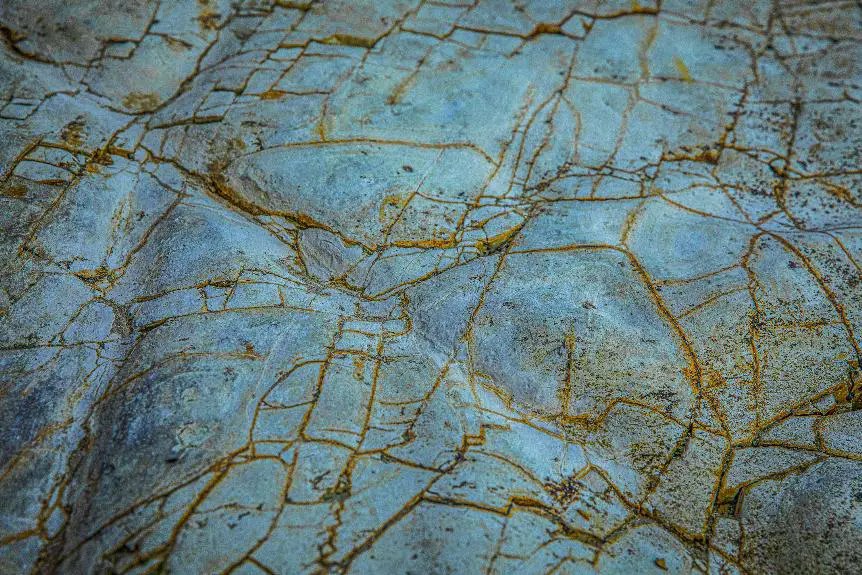Stone backsplashes are susceptible to staining due to their porous nature. Materials like granite, marble, and travertine can absorb liquids, increasing the likelihood of stains, especially in kitchens where they may come into contact with oils, acids, and pigmented substances.
To prevent staining, it’s essential to seal the stone and clean it properly. Let’s now outline how to protect stone backsplashes from stains and maintain their appearance.
Understanding Stone Porosity
Stone porosity is how much a stone absorbs liquids, affecting its likelihood of staining. For kitchen backsplashes made of natural stone, it’s important to know the stone’s porosity to keep it looking good and functional. Stones with high porosity have more gaps that hold liquids, possibly causing stains and damage.
To prevent stains on a stone backsplash, sealing the stone is effective. It reduces porosity by forming a barrier against liquid absorption, protecting against oil, wine, and coffee spills that could stain the surface.
When choosing a sealant for a stone backsplash, consider the stone’s type, as different stones react to cleaners and sealants differently. Use pH-neutral cleaners made for stone care to avoid increasing the stone’s porosity through surface etching, making it more prone to stains.
Maintain your stone backsplash by cleaning spills quickly, using the right cleaning products, and resealing it periodically. This maintenance helps your backsplash last longer and stay in good condition.
Understanding and managing stone porosity is key to enjoying a natural stone backsplash without persistent staining issues.
Common Kitchen Spill Scenarios
In the kitchen, oil splashes, sauce spills, and wine overflows are common and can stain stone backsplashes. These accidents can leave noticeable marks that need quick cleaning to prevent permanent damage. Over time, grease, food particles, and dust can build up, particularly around the stove, where heat and oil make stains harder to remove.
Regular cleaning preserves the appearance of the stone backsplash. Wiping the backsplash after each use helps avoid long-term stains. For greasy marks, it’s recommended to use a cleaner made for stone. This type of cleaner dissolves oil and dirt without harming the stone.
For daily upkeep, a soft cloth with warm water and mild dish soap can remove fresh spills. For older, set-in grease, more vigorous scrubbing might be necessary, but abrasive tools and strong chemicals should be avoided as they can damage the stone’s surface.
With proper cleaning habits, a stone backsplash can stay both functional and attractive.
Stone Backsplash Stain Prevention
To prevent stains on a stone kitchen backsplash, it is essential to apply a sealant to create a barrier against moisture, food, and grease. This not only makes cleaning easier but also prolongs the backsplash’s durability.
Choosing a smooth, polished finish for the stone helps in easy cleaning and reduces the likelihood of contaminants entering the stone’s pores. Dark-colored tiles may hide stains better, but regular cleaning is necessary for any color.
Pay attention to the grout between tiles, as it stains easily. Clean these areas well, particularly after cooking that causes splashes. Use a gentle, pH-neutral cleaner to protect the stone and grout.
Effective Stain Removal Techniques
To remove stains from stone backsplashes, it’s important to act quickly. Blot spills immediately with paper towels to prevent absorption. Cleaning light stains can often be done with a solution of mild dish soap and water.
For oil-based stains, use a mix of dish soap and warm water. Tougher stains, such as those from coffee or wine, might need a poultice with hydrogen peroxide. Follow the manufacturer’s instructions when applying the poultice.
Always test cleaning products on a small, hidden area first to avoid damaging the stone. Use pH-neutral cleaners specifically made for natural stone to prevent surface damage. Avoid harsh cleaners as they can etch the stone.
Regular cleaning and sealing of the backsplash will extend its life and simplify stain management. Proper maintenance helps maintain the stone’s natural appearance over time.
Importance of Sealing Stone
Sealing stone backsplashes is essential for preventing stains and maintaining their appearance. Natural stone is porous and can absorb liquids and chemicals, leading to stains. A sealant acts as a protective barrier, preventing damage to the stone surface.
There are different types of sealants, such as surface sealers, impregnating sealers, and penetrating sealers, each providing a varying degree of protection. Some sealants form a barrier on the stone’s surface, while others penetrate to protect from within, which is particularly useful in kitchens that are exposed to water, food, and grease.
Even if some stone backsplashes come pre-sealed, the sealant can wear off, so it is important to re-seal them regularly to continue to resist staining. Re-sealing helps maintain the stone’s defenses and makes cleaning easier.
When sealing stone, it is important to apply the sealant carefully, including to the grout lines to prevent stains. Applying sealant after cleaning ensures long-lasting protection, extends the life of the backsplash, and keeps it hygienic.
Routine Stone Backsplash Maintenance
Maintaining a stone backsplash requires regular care to avoid stains and maintain its appearance. It’s essential to quickly blot spills with paper towels to prevent them from setting into the stone. For daily cleaning, use a soft cloth or sponge with mild dish soap and water to remove surface dirt without damaging the stone.
Specific stains should be cleaned with appropriate methods to avoid harming the stone. Regularly sealing the backsplash is crucial for protection against stains and discoloration, making it easier to clean.
Clean the grout between stone panels with a stone-safe cleaner and a soft-bristled brush to prevent dirt accumulation.
Consistent upkeep will keep the stone backsplash looking good and durable for daily use.





